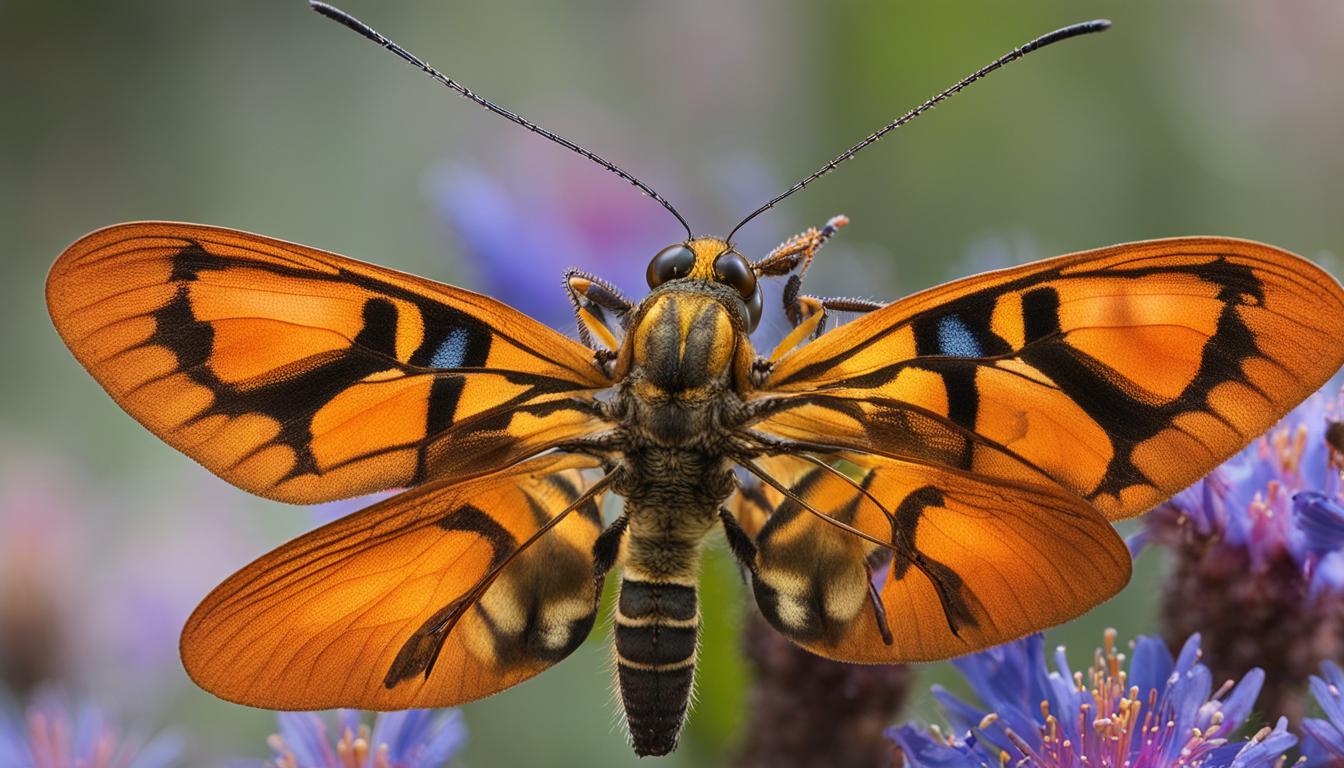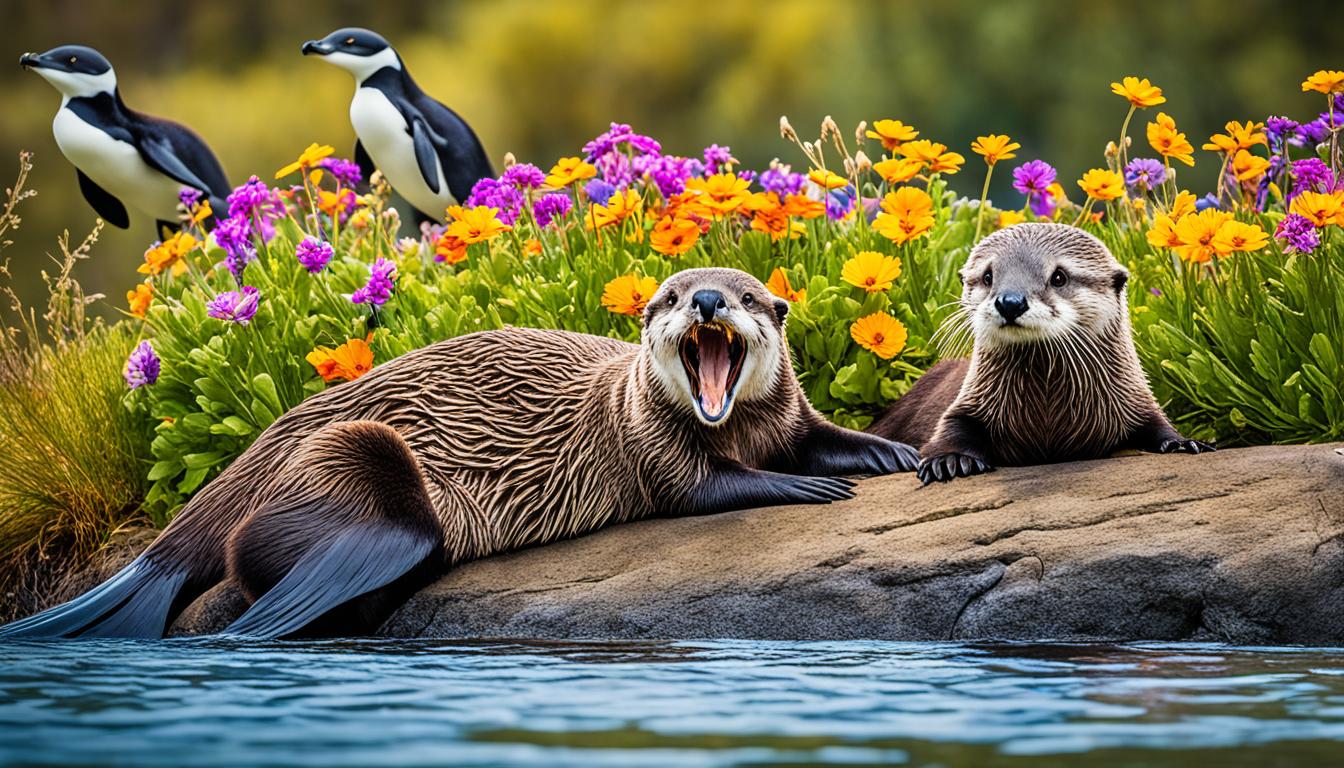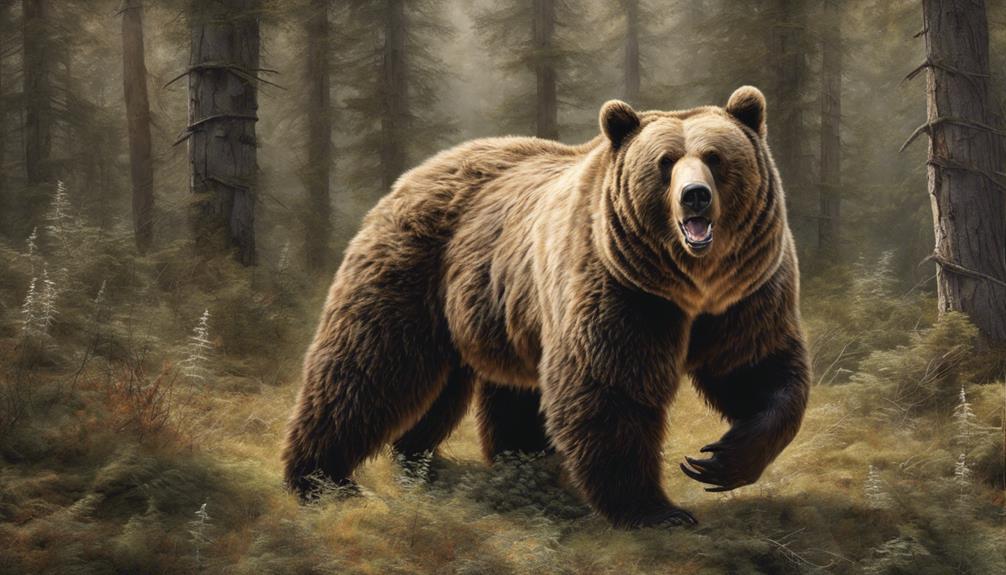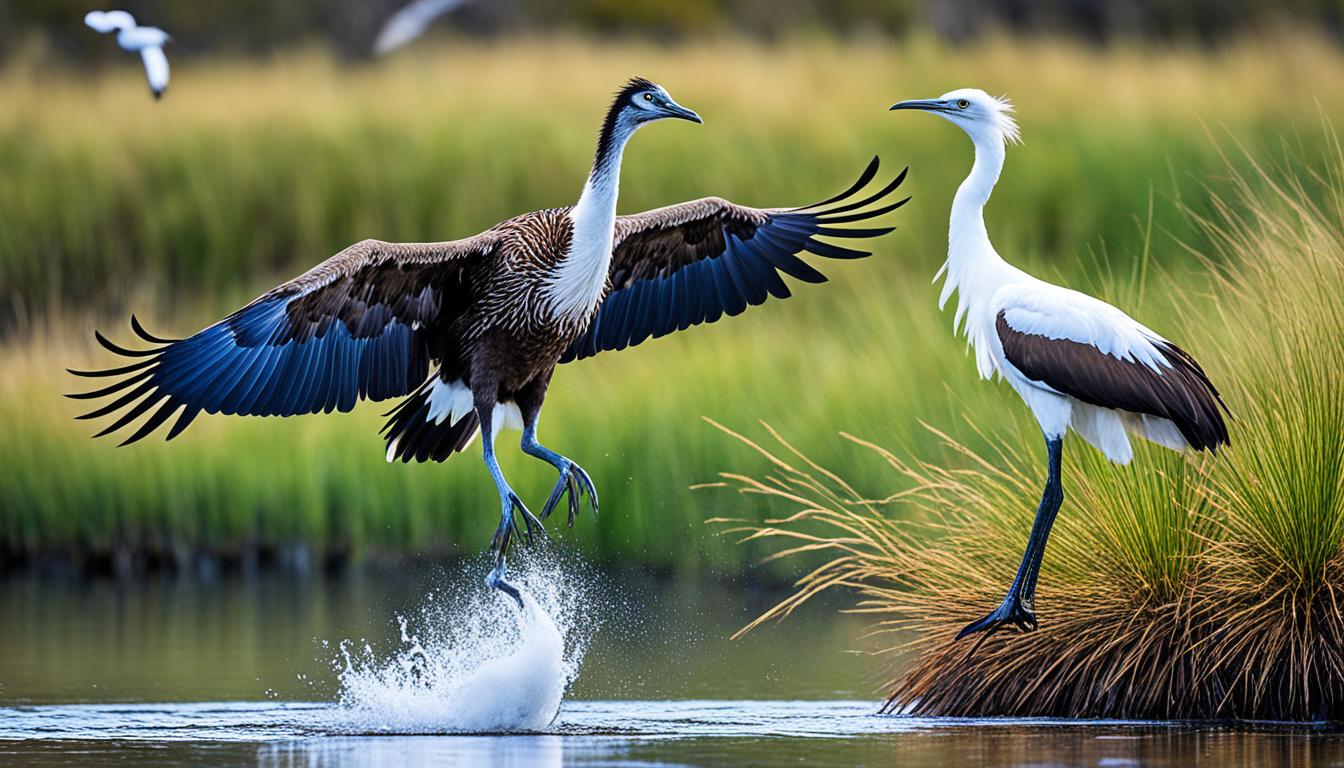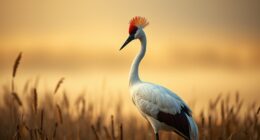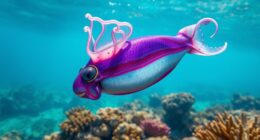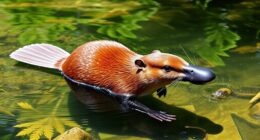Did you realize that invertebrates, an assorted group of animals without backbones, comprise over 95% of all known animal species on Earth? From the tiniest insects to the powerful arthropods and the elegant mollusks, these extraordinary creatures possess a wide array of adaptations and play crucial roles in ecosystems worldwide. Come along as we delve into the mysterious realm of invertebrates and delve into their remarkable diversity, captivating characteristics, and the intriguing world of exoskeletons.
Key Takeaways:
- Invertebrates make up over 95% of all known animal species on Earth.
- They include insects, arthropods, mollusks, and other fascinating creatures.
- Invertebrates have diverse characteristics, reproductive methods, and feeding strategies.
- They exhibit a wide range of adaptations to survive in various habitats.
- Invertebrates play critical roles in nutrient cycling, pollination, and biodiversity conservation.
What are Invertebrates and Their Diverse Characteristics?
In this section, we will delve into the definition of invertebrates and explore their diverse characteristics. We will discuss their absence of a backbone, soft bodies, body symmetry, segmented body, reproductive methods, nervous system, feeding and digestion mechanisms, respiratory systems, as well as their incredible diversity. By understanding the various traits and features of invertebrates, we can gain insights into their unique biology and adaptability.
Absence Of Backbone
Invertebrates are defined by their absence of a backbone or vertebral column. Unlike vertebrates, which have a bony structure that provides support and protection for their central nervous system, invertebrates rely on alternative mechanisms for structural support. This diverse group of animals includes insects, arthropods, mollusks, and many more, each with their unique adaptations to survive without a backbone.
Soft Bodies
Invertebrates are characterized by their soft bodies, which lack the rigid skeletal structures found in vertebrates. Instead of bones, they have flexible and often pliable bodies that allow them to maneuver through various habitats. The absence of bones gives invertebrates the ability to squeeze through small spaces and adopt different body shapes to suit their needs.
Body Symmetry
Invertebrates exhibit a wide range of body symmetry, including radial symmetry and bilateral symmetry. Radially symmetric invertebrates, such as jellyfish, have body parts arranged around a central axis, like the spokes of a wheel. Bilaterally symmetric invertebrates, on the other hand, have a distinct left and right side, often with specialized appendages or sensory organs that facilitate movement and feeding.
Segmented Body
Many invertebrates have segmented bodies, with repetitive sections or segments that house their various organ systems. This segmented arrangement allows for greater flexibility in movement and specialization of body regions. In some cases, segments can also be modified for specific functions, such as locomotion, sensory perception, or reproduction.
Reproduction And Development
Invertebrates have diverse methods of reproduction and development. Some species reproduce sexually, while others reproduce asexually through methods such as binary fission or budding. In terms of development, some invertebrates undergo metamorphosis, transforming from larvae to adults, while others exhibit direct development, where they resemble miniature versions of the adult form from birth.
Nervous System
Invertebrates possess a variety of nervous systems, ranging from simple nerve nets to more complex centralized nervous systems. These nervous systems allow them to perceive and respond to their environment, enabling behaviors such as movement, feeding, and reproduction. In some cases, invertebrates have specialized sensory structures, such as compound eyes in insects or tentacles in cnidarians.
Feeding And Digestion
Invertebrates exhibit a wide range of feeding strategies and digestive systems. Some are filter feeders, straining food particles from the water, while others are herbivores, carnivores, or scavengers. The diversity of invertebrate feeding methods is reflected in their varying digestive structures, including specialized jaws, grinding organs, or complex digestive chambers.
Respiratory Systems
Invertebrates have evolved diverse respiratory systems to obtain oxygen from their environment. Some absorb oxygen through their thin, moist skin, while others have specialized gills, tracheal tubes, or book lungs. These respiratory adaptations allow invertebrates to survive in a variety of habitats, from underwater environments to terrestrial ecosystems.
Diversity
Invertebrates encompass a tremendous diversity of species, making up the majority of animal life on Earth. They range from microscopic creatures to giants of the animal kingdom and inhabit virtually every habitat on the planet. From insects and arachnids to mollusks and crustaceans, invertebrates represent a remarkable array of life forms, each with its unique adaptations and ecological roles.
Ecological Importance
Invertebrates play critical roles in ecosystems and are essential for maintaining ecological balance. They contribute to nutrient cycling, pollination, seed dispersal, and decomposition. Invertebrates also serve as a food source for other organisms, acting as prey for birds, fish, and mammals. The ecological importance of invertebrates extends across various habitats, making them vital components of Earth’s biodiversity.
Types of Invertebrates: From Arthropods to Mollusks
In this section, we will explore the different types of invertebrates, with a focus on arthropods and mollusks. From segmented worms to jellyfish and from beetles to squids, the realm of invertebrates is incredibly diverse and captivating. Let’s dive into the fascinating world of these remarkable creatures and uncover their unique characteristics and adaptations.
Annelida: The Segmented Wrigglers
Annelids, commonly known as segmented worms, are a diverse group of invertebrates. Earthworms and leeches are well-known examples of annelids. With their segmented bodies, annelids play crucial roles in soil health, nutrient cycling, and serve as indicators of environmental conditions.
Nematoda: The Thread-like Survivors
Nematodes, or roundworms, are tiny thread-like worms found in various habitats. They possess incredible survival abilities and can thrive in soil, marine environments, and even as parasites in plants and animals. Nematodes play diverse roles in ecosystems, serving as decomposers, predators, and parasites.
Ctenophora: The Bioluminescent Drifters
Ctenophores, also known as comb jellies, are mesmerizing marine invertebrates. They are characterized by their bioluminescence and graceful swimming movements. Ctenophores occupy important roles in marine food webs as both predators and prey.
Porifera: The Simple Sponge Dwellers
Porifera, or sponges, are among the simplest multicellular animals. They primarily live in aquatic environments and play vital roles in marine ecosystems. Sponges filter-feed on microscopic organisms and serve as habitat structures for other organisms.
Cnidaria: The Stinging Ocean Dwellers
Cnidarians, including jellyfish, corals, and sea anemones, are incredibly diverse invertebrates found primarily in marine environments. They possess specialized stinging cells called cnidocytes, which they use for feeding and defense. Cnidarians are vital components of ocean ecosystems, contributing to coral reef formation and providing habitats for other species.
Mollusca (Mollusks): The Soft-bodied Shelled Creatures
Mollusks are a diverse group of invertebrates characterized by their soft bodies and often hard shells. This phylum includes fascinating creatures such as snails, clams, octopuses, and squids. Mollusks exhibit a wide range of adaptations and occupy various niches in both marine and terrestrial ecosystems.
Echinodermata (Echinoderms): The Spiny Marine Marvels
Echinoderms are marine invertebrates known for their spiny exoskeletons and unique water vascular systems. This phylum includes mesmerizing creatures such as sea stars, sea urchins, and sea cucumbers. Echinoderms play crucial roles in marine ecosystems, contributing to nutrient cycling and acting as keystone species in some habitats.
Platyhelminthes (Flatworms): The Sleek-bodied Creepers
Platyhelminthes, or flatworms, are a diverse group of invertebrates known for their flat, elongated bodies. This phylum includes a wide range of organisms, from free-living planarians to parasitic tapeworms. Flatworms occupy various habitats and exhibit remarkable adaptations for survival and reproduction.
Arthropoda (Arthropods): The Exoskeleton Clad Champions
The arthropod phylum comprises the largest and most diverse group of invertebrates. Arthropods are characterized by their jointed appendages and exoskeletons made of chitin. From insects and spiders to crustaceans, arthropods have conquered nearly every habitat on Earth, playing essential roles as pollinators, decomposers, predators, and more.
Insects: The Multitude of Tiny Wonders
Insects, a class within the arthropod phylum, are the most diverse group of organisms on Earth. They showcase an astounding range of adaptations, life cycles, and ecological roles. Insects play vital roles as pollinators, decomposers, predators, and prey, contributing to the maintenance of healthy ecosystems.
Arachnids (Arachnida): The Eight-legged Predators
Arachnids are another class within the arthropod phylum, known for their intriguing eight legs. Spiders, scorpions, and ticks are among the fascinating creatures in this group. Arachnids occupy diverse habitats and play important roles as both predators and prey in ecosystems.
Crustaceans (Crustacea): The Shelled Sea Creatures
Crustaceans, such as crabs, lobsters, and shrimp, are a diverse group of arthropods primarily found in aquatic environments. They exhibit a wide range of body forms and occupy various ecological roles. Crustaceans play essential roles in nutrient recycling and serve as a valuable food source for humans and other animals.
Unraveling the World of Arthropods: Beetles, Spiders, and Crustaceans
Arthropods, including beetles, spiders, and crustaceans, encompass incredible diversity and fascinating traits. Beetles, with their hard exoskeletons and an unparalleled abundance of species, are the most numerous insects on Earth. Spiders, known for their intricate webs and venomous fangs, demonstrate exceptional predatory skills. Crustaceans, such as crabs and lobsters, possess adaptable bodies and unique locomotion mechanisms that allow them to thrive in various marine environments.
Diving Deeper into the Mollusk Family: Snails, Squids, and Clams
Mollusks encompass a wide range of captivating creatures, including snails, squids, and clams. Snails have spiral shells and inhabit diverse terrestrial and aquatic environments. Squids showcase complex behaviors and remarkable anatomical features, making them agile marine predators. Clams, with their bivalve shells, are filter-feeding organisms found in both freshwater and marine habitats.
Examining the Fascinating Diversity of Jellyfish and Other Cnidarians
Cnidarians, which include jellyfish, corals, and sea anemones, captivate with their unique physical and behavioral adaptations. Jellyfish, with their graceful tentacles and stinging cells, enchant with their otherworldly appearance. Corals form intricate structures through symbiotic relationships with photosynthetic algae, contributing to the creation of coral reefs. Sea anemones, with their delicate bodies and venomous tentacles, exemplify the diversity of cnidarians.
Evolution and Adaptations of Invertebrates
Invertebrates have undergone remarkable evolution and developed unique adaptations that have allowed them to thrive in diverse environments. From the role of exoskeletons in arthropods to the fascinating features of marine invertebrates like feather stars and sponges, and the adaptations of insects and mollusks in various habitats, invertebrates have demonstrated incredible resilience and survival strategies.
The Role of Exoskeletons in Arthropods and Their Survival Advantages
Arthropods, including insects, spiders, and crustaceans, possess exoskeletons made of chitin. These external skeletons provide arthropods with essential support, protection, and structural integrity. Exoskeletons offer significant advantages, such as resistance to desiccation, physical injuries, and predation. Their rigid nature allows for efficient movement and acts as a barrier against external threats.
Exoskeletons also provide arthropods with a platform for muscle attachment, enabling powerful movements and actions. As arthropods grow, they molt their old exoskeletons and produce new ones, allowing for continuous growth and development. This adaptive feature has contributed to the evolutionary success of arthropods, allowing them to colonize various habitats and niches.
Exploring the Unique Features of Marine Invertebrates like Feather Stars and Sponges
Marine invertebrates display fascinating adaptations that enable them to thrive in the challenging environment of the ocean. Feather stars, for example, are free-swimming and filter-feeding creatures. They have a unique feeding mechanism that involves capturing food particles using their feather-like arms. This adaptation allows them to efficiently obtain nutrients from the water column.
Sponges, on the other hand, are sessile organisms that form intricate structures with specialized cells. They are filter feeders, extracting nutrients from the water that passes through their porous bodies. Sponges possess a remarkable regenerative ability, and even small fragments can grow into fully functional individuals. Their adaptive features contribute to their survival in marine ecosystems and their ability to maintain structural integrity despite constant water movement.
Adaptations of Insects and Mollusks in Various Habitats and Environments
Insects have evolved a wide array of adaptations that allow them to thrive in diverse habitats and environments. Some insects, like butterflies, have developed wings for flight, enabling them to explore vast territories and access new food sources and reproductive opportunities. Others have evolved camouflage mechanisms to blend in with their surroundings, enhancing their ability to evade predators and capture prey.
Mollusks, such as snails, squids, and clams, have also developed unique adaptations to suit their respective habitats. Snails have evolved shells to provide protection and create a moisture-rich environment. Squids, with their streamlined bodies and powerful jet propulsion, are well-adapted for agile movement in the open ocean environment. Clams possess strong shells that allow them to burrow into sediment or attach to rocky substrates, ensuring their survival in diverse aquatic environments.
By examining the evolution and adaptations of invertebrates, we gain a deeper understanding of their remarkable ability to adapt to various ecological niches. These adaptations have contributed to the resilience and success of invertebrates in the face of environmental challenges, making them one of the most diverse and fascinating groups of organisms on the planet.
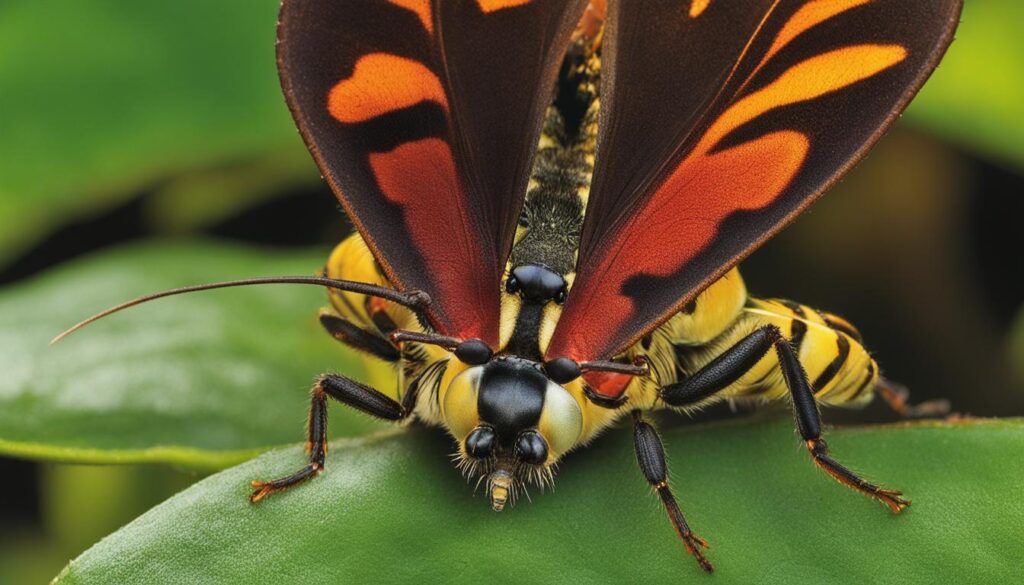
Threats, Conservation, and the Future of Invertebrate Species
Invertebrate species face numerous threats that endanger their survival and contribute to biodiversity loss. The impact of climate change and human activities poses significant challenges for these vulnerable creatures. However, conservation efforts and the recognition of the importance of invertebrates can help secure their future.
Understanding the Impact of Climate Change and Human Activities on Invertebrate Populations
Climate change has far-reaching consequences for invertebrate populations. Rising temperatures, altered precipitation patterns, and extreme weather events disrupt their habitats and life cycles. Invertebrates rely on specific environmental conditions and have evolved to thrive in their natural habitats. As these conditions change, invertebrates struggle to adapt, leading to declining populations and potential extinctions.
Human activities further exacerbate the threats faced by invertebrates. Habitat destruction, pollution, and the introduction of invasive species contribute to the decline in invertebrate populations. Uncontrolled urbanization, deforestation, and intensive agriculture lead to the loss and fragmentation of their habitats. Pollution, including chemical pollutants and plastic waste, contaminates their environments. The introduction of invasive species disrupts the delicate balance of ecosystems, outcompeting and preying on native invertebrates.
Conservation Efforts for Vulnerable Invertebrate Species: Challenges and Solutions
Conserving vulnerable invertebrate species presents several challenges. Limited knowledge about their distributions and life cycles, as well as insufficient funding, hinders conservation efforts. Additionally, the small size and inconspicuous nature of many invertebrates make them difficult to study and protect effectively.
However, solutions exist to address these challenges. The establishment of protected areas and conservation reserves plays a crucial role in safeguarding invertebrate habitats. These areas provide undisturbed ecosystems where invertebrate populations can thrive. Habitat restoration projects, such as reforestation and wetland regeneration, are vital in creating suitable habitats for invertebrates.
Captive breeding programs offer a solution for the conservation of rare and endangered invertebrate species. By breeding and reintroducing these individuals into the wild, conservationists increase their chances of survival and population recovery. Public awareness initiatives, education, and engagement foster a deeper understanding and appreciation for invertebrates, leading to increased support for conservation efforts.
Discussing the Importance of Invertebrates in Habitat Restoration and Biodiversity Conservation
Invertebrates play a crucial role in habitat restoration and biodiversity conservation. Their interactions with plants, including pollination and seed dispersal, contribute to the reproduction and survival of many species. Invertebrates also play key roles in nutrient cycling, breaking down organic matter and facilitating the release of nutrients back into the ecosystem. Without invertebrates, essential ecological processes would be disrupted, endangering the stability and health of ecosystems.
Promoting the conservation of invertebrates is necessary to preserve biodiversity. Invertebrates constitute a substantial portion of the global species richness, and their protection ensures the integrity of ecosystems. By conserving invertebrates, we maintain the balance of natural communities and secure the future of countless plant and animal species.
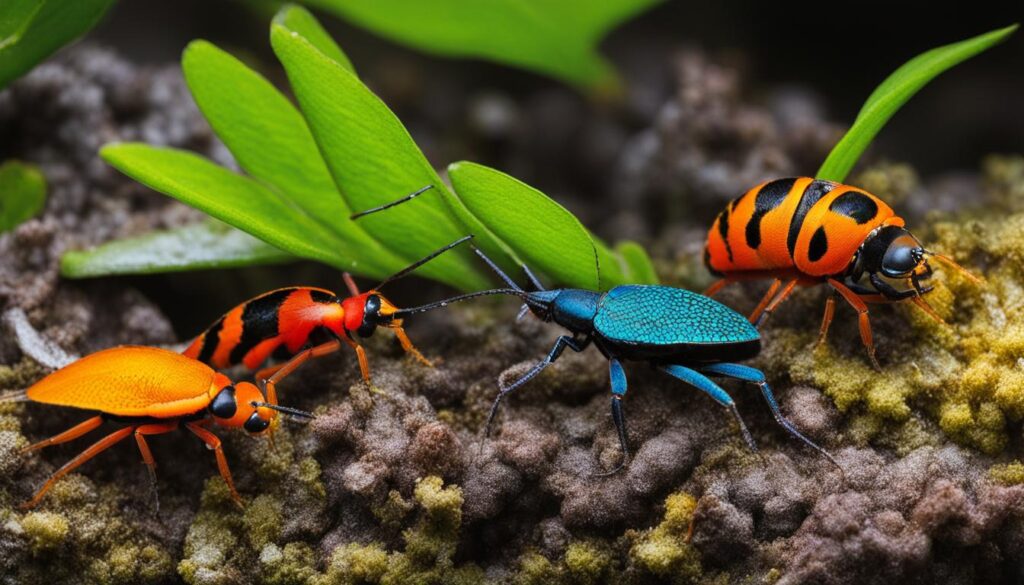
Threats And Conservation Of Invertebrates:
Invertebrates face numerous threats that jeopardize their survival and well-being. Understanding these threats and implementing effective conservation strategies is crucial for the protection of these remarkable creatures.
Habitat loss and fragmentation
Habitat loss and fragmentation are significant threats to invertebrates. Human activities such as deforestation, urbanization, and agriculture destroy or fragment natural habitats, disrupting the ecological balance and threatening the survival of invertebrate populations. As their habitats diminish, invertebrates face challenges in finding food, shelter, and suitable breeding grounds. Conservation efforts must prioritize habitat conservation and restoration to ensure the long-term survival of these species.
Climate change
Climate change poses a major challenge to the survival of invertebrate species. Rising temperatures, shifts in precipitation patterns, and extreme weather events can disrupt their reproductive cycles, alter habitats, and reduce food availability. Invertebrates, with their specialized adaptations to specific environments, may struggle to cope with the rapid changes brought on by climate change. Mitigation and adaptation strategies, such as conserving diverse habitats and creating climate-resilient landscapes, are needed to safeguard invertebrate populations.
Pollution
Pollution, including chemical contaminants, plastic debris, and nutrient runoff, poses significant risks to invertebrate species and their habitats. Invertebrates are highly sensitive to pollution and can suffer adverse effects on their physiology, behavior, and reproductive capabilities. To protect invertebrates from pollution, it is essential to reduce and manage sources of pollution, promote sustainable waste management practices, and advocate for cleaner technologies.
Invasive species
Invasive species pose a serious threat to invertebrates by outcompeting native species and disrupting the delicate balance of ecosystems. Invasive species can displace native invertebrates from their habitats, alter their food sources, and introduce new diseases and parasites. Preventing the introduction and spread of invasive species is crucial for safeguarding invertebrate populations. This can be achieved through comprehensive monitoring, early detection, and effective management strategies.
Overexploitation
Overexploitation, including unsustainable harvesting and collection practices, can deplete invertebrate populations and degrade their habitats. Invertebrates, such as certain species of mollusks, crustaceans, and insects, are often exploited for various purposes, including food, medicine, and the pet trade. Sustainable management practices, such as regulating fishing and hunting practices, implementing harvest quotas, and promoting responsible consumer choices, are necessary to ensure the long-term survival of these species.
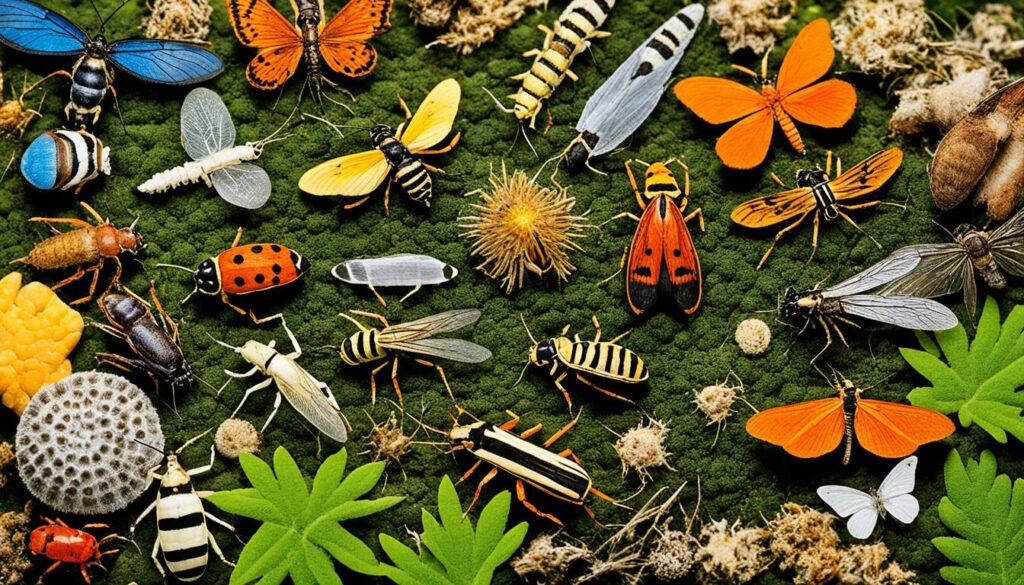
Conclusion
In conclusion, the realm of invertebrates is a fascinating and diverse world filled with incredible creatures. From insects and arthropods to mollusks and other invertebrate groups, they occupy vital ecological roles and contribute to the overall health and balance of ecosystems.
However, invertebrates face numerous threats, including habitat loss, climate change, pollution, invasive species, and overexploitation. These challenges endanger their populations and jeopardize their ecological importance.
To ensure the future survival and conservation of invertebrates, it is crucial to understand their significance and implement effective conservation efforts. This can be achieved through education, awareness, and collective action.
By fostering a greater appreciation for the enigmatic realm of invertebrates, we can inspire individuals and communities to take part in protecting and preserving these remarkable creatures. Together, we can make a difference in safeguarding the diversity and ecological importance of invertebrates, ensuring a thriving and balanced planet for generations to come.
